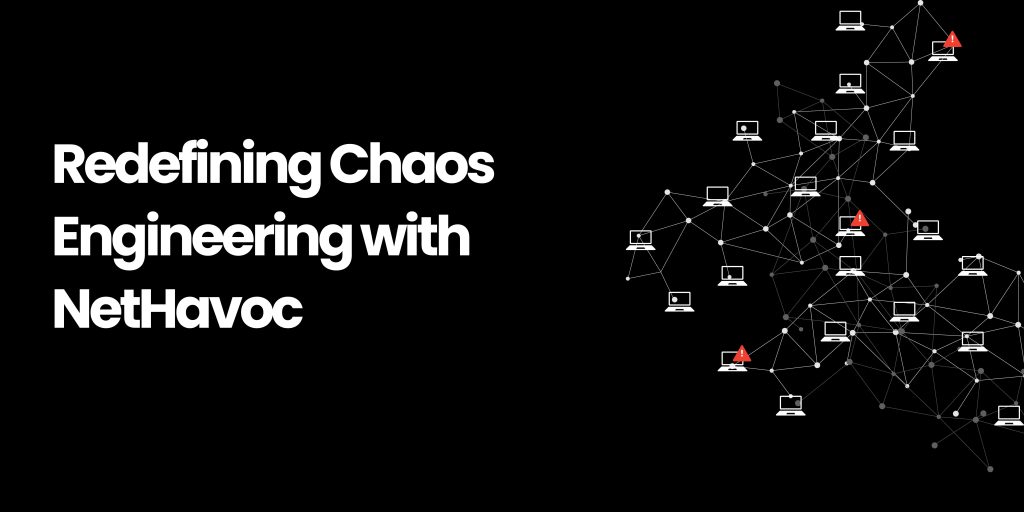
Unleashing the Power of Chaos Engineering with NetHavoc: Building Reliability in an Unpredictable World
In our previous discussions on Chaos Engineering, we’ve underscored its crucial role for Site Reliability Engineers (SREs) and DevOps practitioners. By introducing controlled system disruptions, Chaos Engineering allows teams to proactively identify weaknesses, enhance system reliability, and build robust resilience. This practice not only uncovers vulnerabilities but also refines incident response, optimizes automation workflows, and fosters better collaboration across departments. Today, we will dive into the specifics of how the Cavisson Chaos Engineering Platform works, detailing its features and the value it brings to modern digital infrastructures.Introducing NetHavoc
NetHavoc, Cavisson’s advanced Chaos Engineering platform empowers SRE and platform teams to enhance system uptime and reliability significantly. By simulating real-world failures, NetHavoc allows users to proactively test the resilience of mission-critical applications. This comprehensive platform enables chaos experiments to be injected across the entire application landscape, thereby validating system reliability and fostering a robust reliability culture. NetHavoc’s capabilities extend beyond mere fault injection; it offers robust monitoring tools that provide detailed insights into the impacts of these experiments. This continuous feedback loop ensures that any weaknesses are promptly identified and addressed, leading to more resilient systems. NetHavoc is an essential tool for teams committed to maintaining high availability and reliability in their systems. By integrating chaos engineering into their regular operations, organizations can anticipate potential failures and prepare accordingly, ensuring uninterrupted service and a stronger overall infrastructure. The graphic below shows four categories, from infrastructure to application, which contain over 22 different chaos experiments that are supported on multiple platforms. Such a wide variety of chaos experiments is unseen in other solutions as they either end up focussing on a few categories and/or platforms.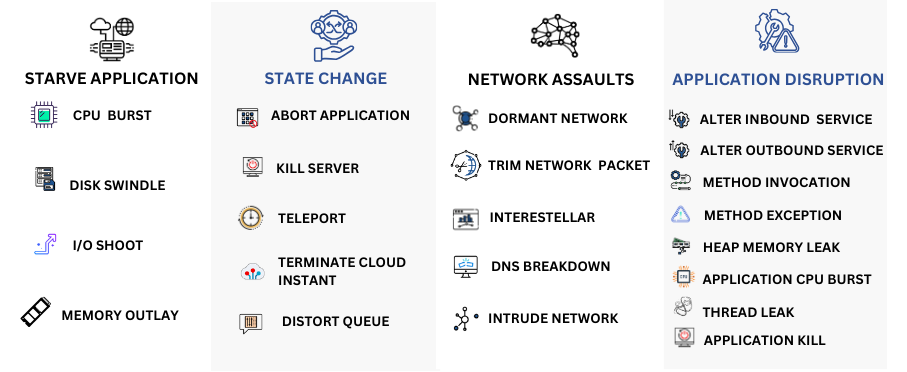
Here’s how NetHavoc stands out:
❖ Reliability Across Environments
NetHavoc enables chaos engineering across multiple infrastructures, whether they are on-premises, hybrid, or cloud-based. This flexibility ensures that your reliability testing is thorough and tailored to your unique setup.

By supporting a wide array of platforms, including Linux, AWS, Azure, Google Cloud, Docker, Kubernetes, Windows, and Pivotal Cloud Foundry, NetHavoc ensure comprehensive applicability. Furthermore, with the addition of IBM Cloud Foundry to its arsenal, NetHavoc enhances its compatibility with diverse IT environments, making it an essential tool for robust and effective reliability testing.
❖ Building Customer Trust
By addressing potential failures before they impact customer experience, NetHavoc helps you keep your customers at the center of your innovation efforts. Proactively improving system reliability builds customer trust and confidence.
❖ Reducing MTTD & MTTR
NetHavoc reduces Mean Time to Detect (MTTD) and Mean Time to Repair (MTTR) by seamlessly integrating performance testing and observability, enabling IT teams to identify and resolve issues swiftly. This integration allows for comprehensive resilience testing by combining performance and chaos engineering, simulating high traffic and failure scenarios to pinpoint vulnerabilities. Through deep-dive diagnostics and continuous monitoring of complex applications, NetHavoc provides detailed insights into performance issues, helping teams protect resources and maintain operational efficiency. This holistic approach ensures applications are robust, reliable, and prepared for high-stress conditions.
❖ Reducing Cost of Downtime
Downtime can be costly. NetHavoc allows you to be proactive in testing your system’s weaknesses and addressing them before they result in significant financial implications and public outages .
❖ Advanced Alerting
Cavisson Systems’ platform features advanced alerting capabilities, enabling users to generate alerts during or after chaos experiments. These alerts can be sent to various IT Service Management (ITSM) and messaging platforms, including BigPanda, BMC Remedy, Cisco Spark, Microsoft Kaizala, PagerDuty, ServiceNow, Slack, Zoho ServiceDesk Plus, and other Cavisson products.
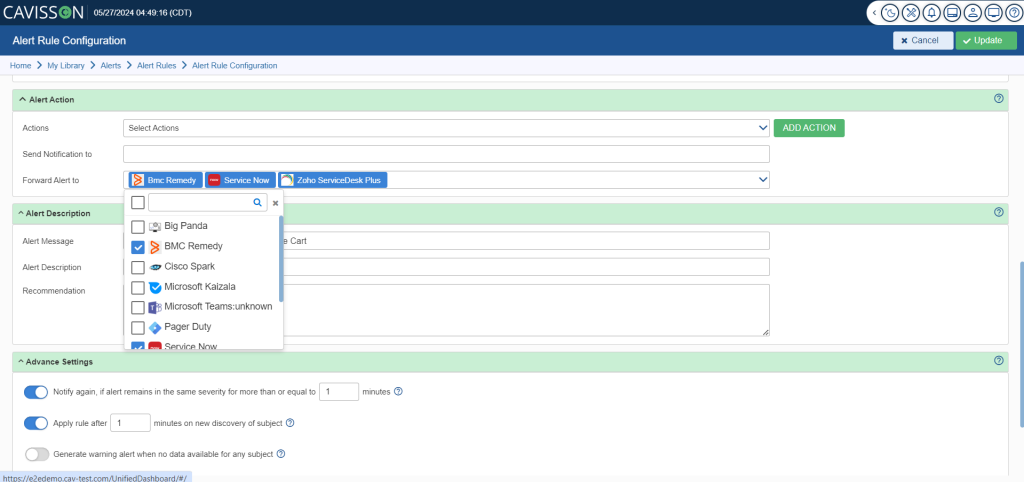
❖ In-built Reporting Capabilities:
Analyze and visualize the impact of various disruptions directly within NetHavoc.
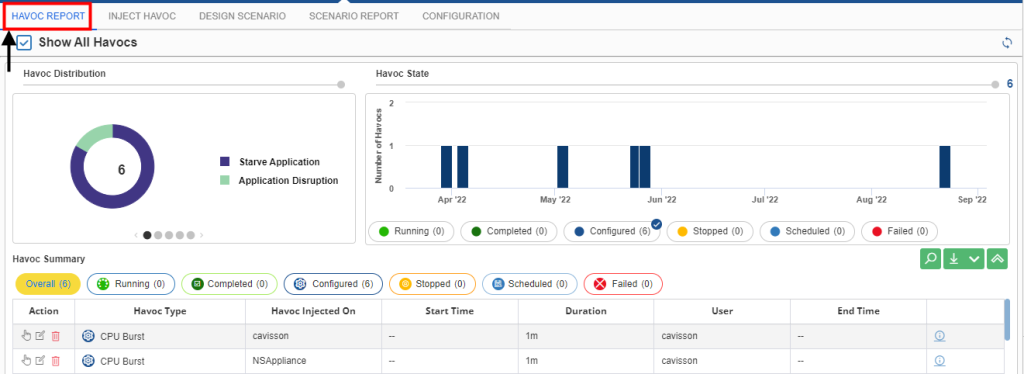
Elevating Resiliency Testing to Resiliency Engineering
Traditional methodologies often fall short in accurately depicting a system’s resiliency, particularly when they lack extensive observability insights and do not incorporate production-level load. NetHavoc elevates resiliency testing by combining chaos experiments with built-in load generation and comprehensive observability. This approach ensures that your resiliency scores reflect the true robustness of your mission-critical applications.
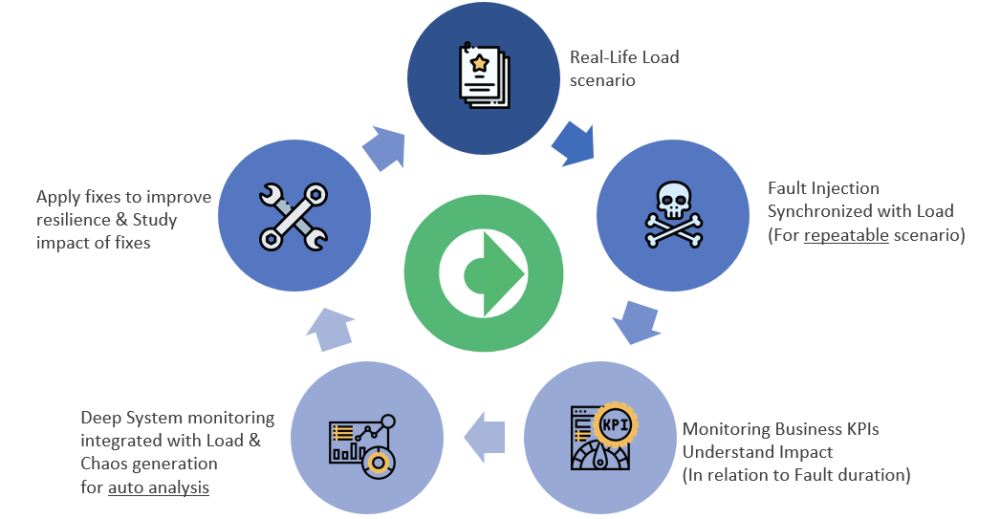
Extending Insights with Integration
NetHavoc goes beyond standalone chaos engineering by offering seamless integration with performance testing and application performance monitoring. This convergence of disciplines provides deeper insights into application vulnerabilities and performance bottlenecks, empowering you to protect your resources and bottom line effectively.
Conclusion: Embrace Chaos, Build Resilience
In today’s dynamic digital landscape, chaos is inevitable. However, with NetHavoc, you can transform chaos into an opportunity to enhance resilience and fortify your application infrastructure. By embracing chaos engineering as a proactive strategy, you can stay ahead of potential failures, maintain customer trust, and ensure business continuity in an unpredictable world.
Ready to Get Started?
Schedule a demo of NetHavoc today and embark on a journey towards unparalleled reliability and peace of mind. Embrace chaos engineering with NetHavoc and build a resilient future for your applications. Contact us now to learn more!

